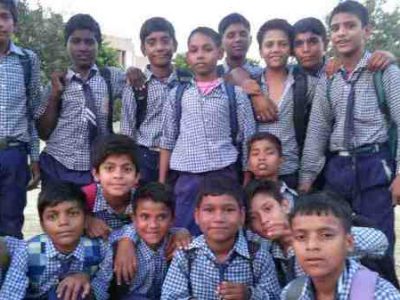
Out-of-School Children Face the Risk of Abuse and Exploitation
Out-of-School Children Face the Risk of Abuse and Exploitation
In the top 10 countries with the highest rates of children missing out on primary education, nearly 2 in every 5 children – 18 million – are out of school, UNICEF said today.
Liberia is home to the highest proportion of out-of-school children with nearly two-thirds of primary-aged children not accessing school.
The second highest is South Sudan, where 59 per cent of children are missing out on their right to a primary education and 1 in 3 schools is closed due to conflict.
Afghanistan (46 per cent), Sudan (45 per cent), Niger (38 per cent) and Nigeria (34 per cent) also feature in the top 10 countries with the highest primary out-of-school rates, painting a clear picture of how humanitarian emergencies and protracted crises are forcing children out of school.
[ Request for Help to Open Free School for Poor Children ]
“For countries affected by conflict, school equips children with the knowledge and skills they need to rebuild their communities once the crisis is over, and in the short-term it provides them with the stability and structure required to cope with trauma,” said UNICEF Chief of Education Jo Bourne.
“Schools can also protect children from the trauma and physical dangers around them. When children are not in school, they are at an increased danger of abuse, exploitation and recruitment into armed groups.”
[ Education Dilemma: Let Us Save the Lives of Our School Children ]
The UNICEF data analysis, which comes as millions of children return to school this month, highlights the extent of an education crisis affecting countries already blighted by conflict, prolonged periods of drought, flash floods, earthquakes and high rates of extreme poverty.
UNICEF fears that without education, a generation of children living in countries affected by conflict, natural disasters and extreme poverty will grow up without the skills they need to contribute to their countries and economies, exacerbating the already desperate situation for millions of children and their families.
[ 10 Steps to Save Education in the Schools of Delhi ]
Education continues to be one of the least funded sectors in humanitarian appeals. In 2015, humanitarian agencies received only 31 per cent of their education funding needs, down from 66 per cent a decade ago.
Despite a 126 per cent increase in education requirements since 2005, funding increased by just 4 per cent. Moreover, according to UNICEF, education systems equipped to cope with protracted crises cannot be built on the foundations of short-term – and unpredictable – appeals.
[ Also Read: Unemployment May Cause Social Unrest in India ]
During the World Humanitarian Summit, held in May 2016, a new global funding platform, Education Cannot Wait, was launched to bridge the gap between humanitarian interventions during crises and long-term development afterwards, through predictable funding.
Though not one of the top 10 countries with the highest rates of out-of-school children, Syria is home to 2.1 million school-age children (5-17) who are not in school. An additional 600,000 Syrian children living as refugees in the surrounding region are also out of school.
UNICEF promotes the rights and wellbeing of children.
Photo courtesy: UNICEF




